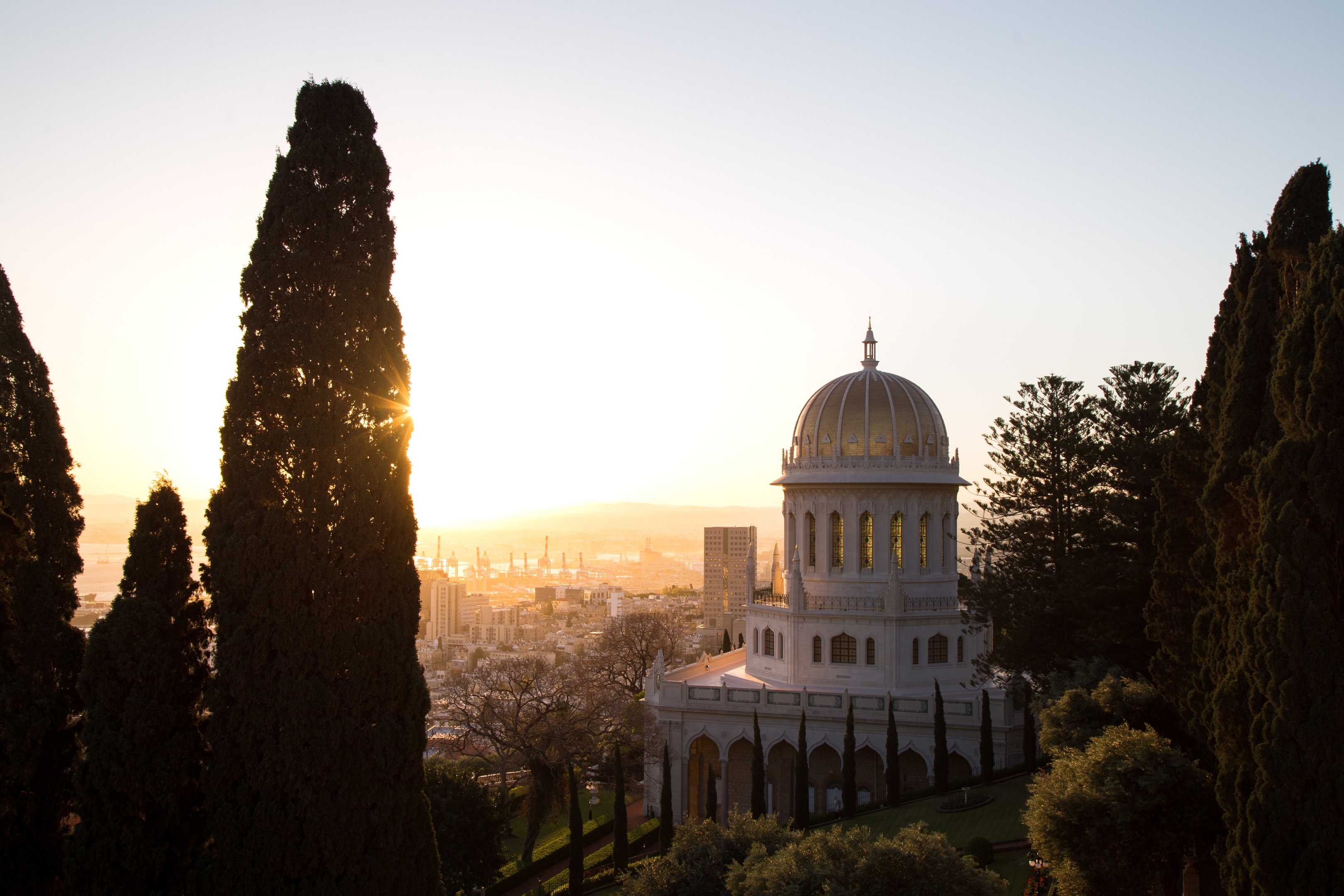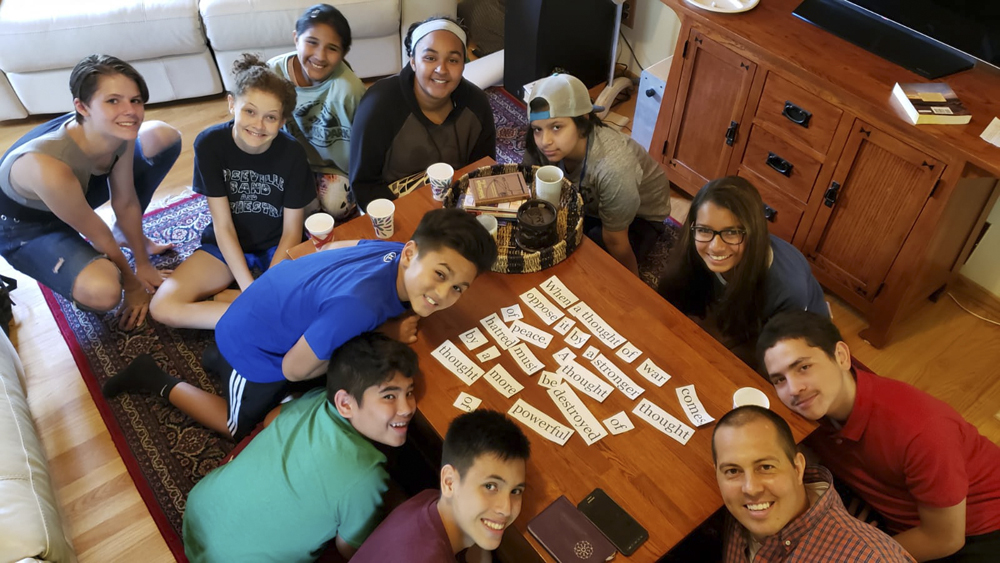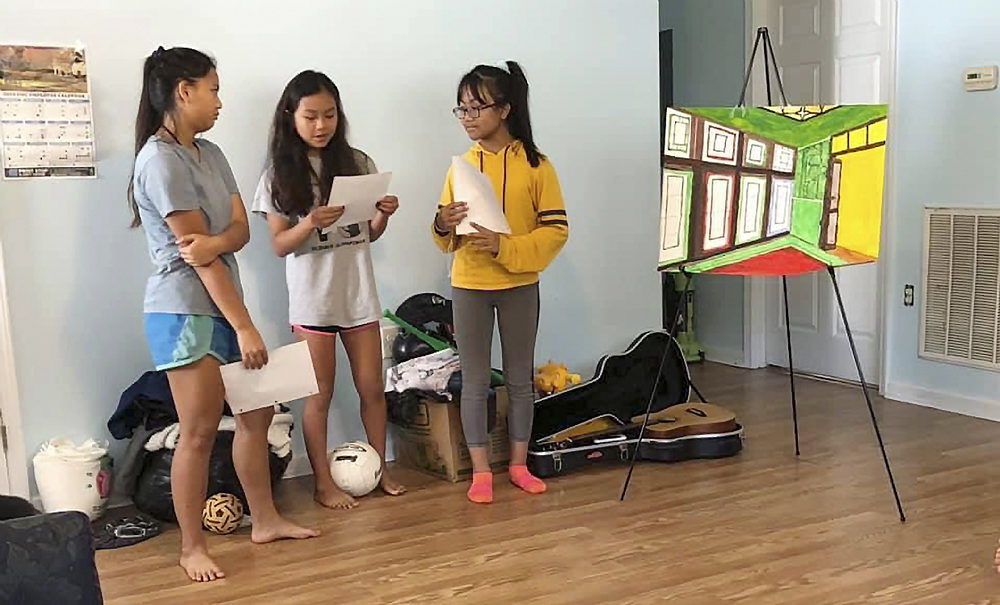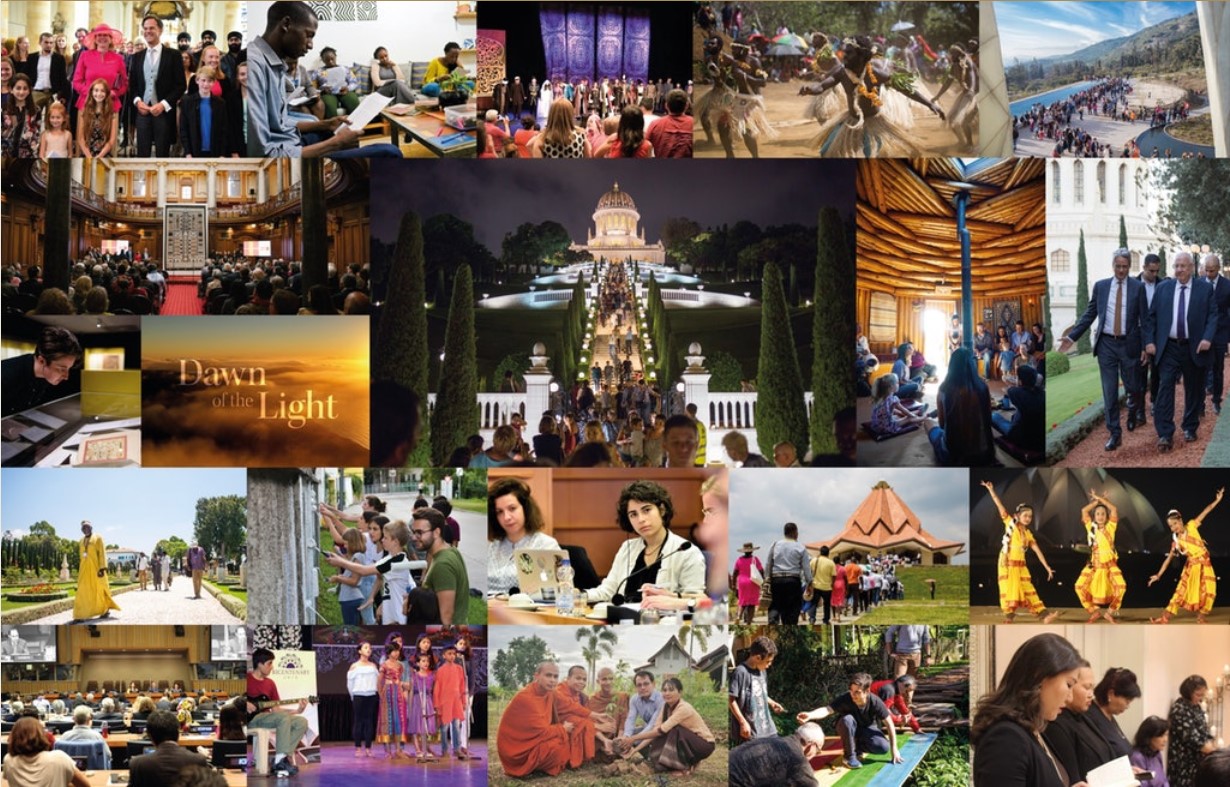
Families, neighborhoods are centers of attraction
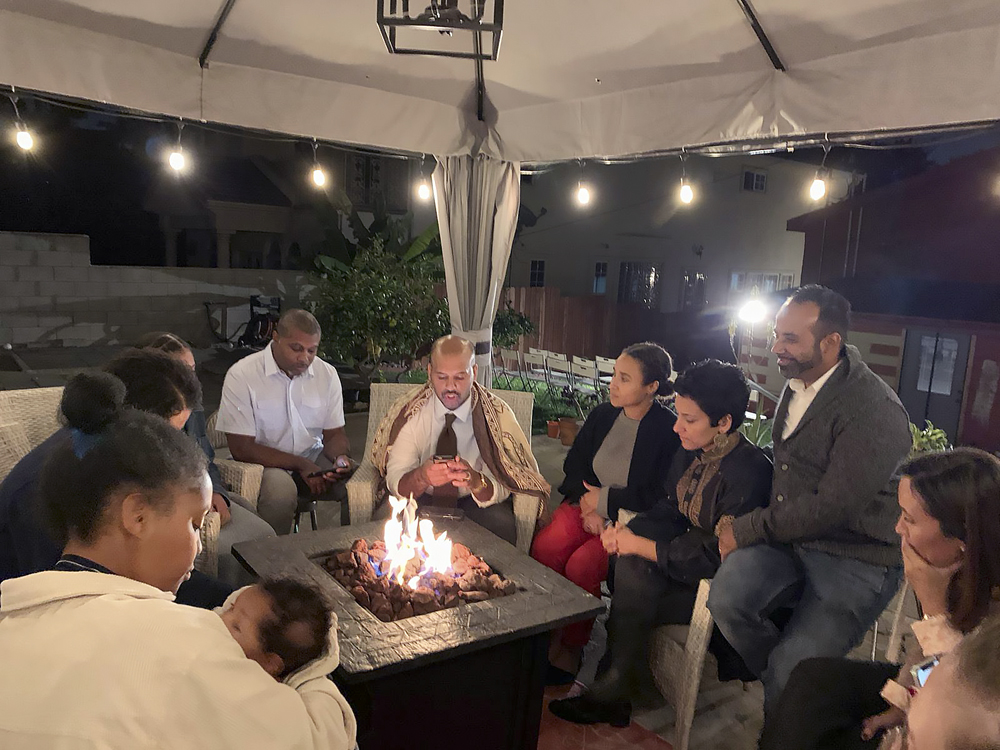
Baha’is and friends throughout the country opened their homes to friends, neighbors and co-workers for the bicentenary of the birth of the Bab, herald of the Baha’i Faith.
Many of these guests had already been engaged in Baha’i-initiated core activities of community building.
Devotional leads naturally into bicentenary
During an intimate neighborhood bicentenary gathering in Cornelius, North Carolina, a guest had a question about the stations of the Bab and Baha’u’llah.
An eloquent answer came from a member of the Church of Jesus Christ of Latter-day Saints who regularly participates in devotional gatherings at the Baha’i home where the bicentenary celebration was held.
He painted a rich picture that placed the advent of these two Messengers of God within the context of widespread spiritual fervor in the mid-1800s. He even noted the nearly simultaneous occurrences of the declaration of the Bab’s mission and the sending of the first telegraph message: “What hath God wrought?”
Four Latter-day Saints are among regular participants in the hosts’ devotional: the man and his wife, who knew many Baha’is in Minnesota before moving to the Charlotte area, and two young male missionaries who live and serve in the neighborhood.
The hosts often include readings from guests’ faith traditions and encourage them to share favorite passages on each devotional’s theme. For the most recent devotional, on gratitude, passages were read from the books of Alma and Mosiah in the Book of Mormon.
At the bicentenary celebration, the question on the stations of the Twin Manifestations was posed as the nine people in the room settled in with refreshments to view the film Dawn of the Light. An excellent discussion ensued, with the film proceeding to reinforce many of the points raised.
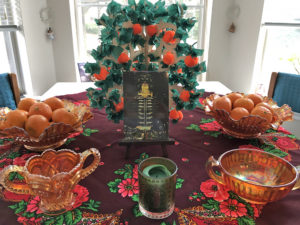
Earlier, guests had entered the apartment to the sight of a lovingly crafted diorama of a spiritual garden. After introductory remarks, they unrolled and recited quotations from the Writings of the Bab placed throughout the garden. Videos of writings set to music punctuated the readings.
The evening’s refreshments were arrayed on a table centered with another creation: a multimedia sculpture of an orange tree from the House of the Bab in Shiraz, Iran.
And the guest who posed the question? She couldn’t stay for the film, but within days she had viewed it online and was commenting that the teachings and practices depicted are just what are needed today.
Celebration goes house to house
Families in Marquette, Michigan, worked together to plan and host a “progressive” bicentenary celebration with neighbors.
It began with breakfast at a local shop, with sharing of the story of Mulla Husayn, the first person to seek out and declare belief in the Bab.
Morning tea was hosted at a home — with address number 1844, the year the Bab’s ministry began — with devotions and deepening about the Revelation of the Bab and His writings. Guests decorated sheets of paper with passages from the writings, and they sang prayers revealed by the Bab.
Lunch was hosted by another family. Attendees read about the Letters of the Living, the Bab’s first 18 followers, and searched for small five-pointed star charms that had been hidden throughout the room.
Dinner was hosted by yet another family, and the large number of people gathered there shared joyful music and spoke about the Bab’s special station in religious history.
Finally, dessert was hosted by another family. They shared the inspiring story of Tahirih, the only woman in that first cohort of followers, and selected writings about the emancipation of women.
At each stop, guests received a small sculpted charm that related in some way to the story or theme of the stop. Linked together, they became a small mobile by the end of the day.
Attendance increased with each stop, with a total of about 30 people involved.

A similar house-to-house celebration was held in the View Heights section of Los Angeles, California. Three families hosted, and on the invitation was a watercolor drawing that depicted the homes.
Participants walked from one home to another, with children holding candles to illuminate the path.
Prayers and songs at the first home led to more songs and dinner at the second. At the third home, hosted by friends of the Baha’is, neighbors watched Dawn of the Light.
A diversity of celebrations
In Kansas City, Missouri, neighborhood families shared stories around a fireplace as rain and snow intermittently fell outside. A graduate of the Baha’i-initiated junior youth spiritual empowerment program shared the story of Anis, the young believer who was martyred with the Bab.
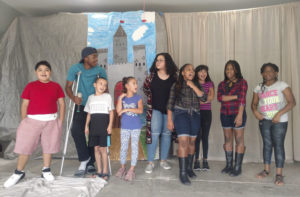
Baha’is and friends in Clayton, North Carolina, held a Light of Unity Festival. Discussion of the lives of the Bab and Baha’u’llah was followed by a description of the community-building activities their teachings have inspired. Three children’s classes and two junior youth groups made presentations before prayers, then the group enjoyed lawn games, group art projects and socializing.
In Rockwall, Texas, a Unity Festival in a local park included a speech about the Bab and community building, children’s presentations and singing. A youth who facilitates a junior youth group spoke about the joys of mentoring younger people,
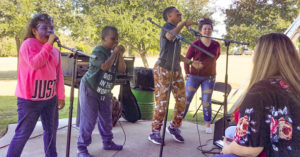
the impact of the junior youth program, and the power of prayer. Along with cookie decorating, face painting, balloon twisting and jump houses, attendees enjoyed a performance by a local teen band that sang about unity and justice.
A woman in Montgomery County, Maryland, dedicated the devotional gathering she hosts to the bicentenary, after several weeks of studying stories from the life of the Bab with a Baha’i friend. Together, the host and the Baha’i created a program about the sacrifices of the Messengers of God, which included recorded music, singing and prayers.


